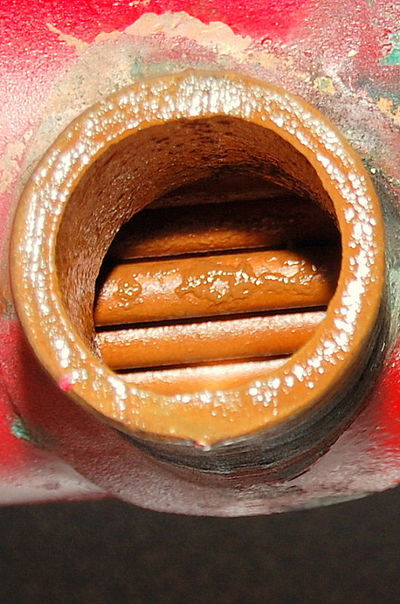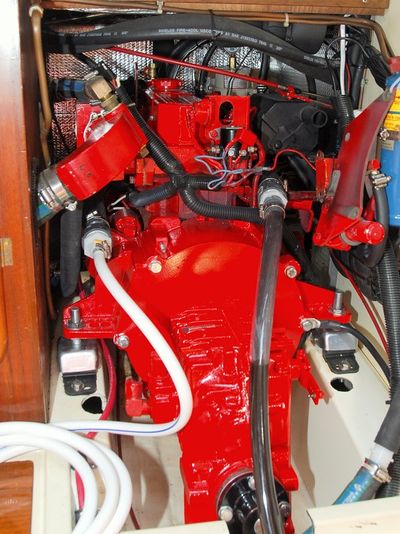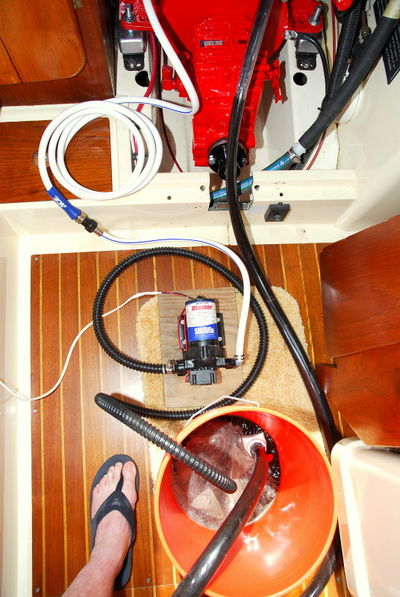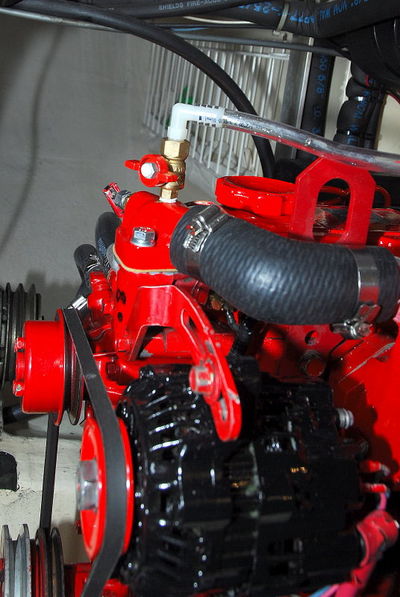ONE PROCEDURE TO FLUSH the ENGINE CLOSED COOLANT SYSTEM - from RC's (aka Mainesail aka Rod Collins aka Compass Marine)
Combining a Sailnet and Cruise's Forum post:
https://www.sailnet.com/forums/1252482-post5.html
http://www.cruisersforum.com/forums/archive/index.php/t-134574.html
Here are RC's steps that he uses to flush the closed coolant system (thank you, Rod!):
If changing antifreeze, the best thing to do, especially if your engine had or has "Death-Cool" in it, is to thoroughly flush it out, clean it, and start fresh.
Death-Cool Sludge:
http://www.pbase.com/mainecruising/image/108349271.jpg

To do this on a Westerbeke;
1- Remove t-stat and replace cover housing using a spare gasket.
2- Remove HX (might as well clean and have pressure tested.)
3- Purge old AF out of engine with pump into 5 gal bucket.
4- Use an acid resistant pump and circulate Rydlyme through engine block to clean cooling passages.
Connection points:
http://www.pbase.com/mainecruising/image/122459310.jpg
[Note the connection points to his Westerbeke engine are the feed to and return from the (removed) Hx -kk]

Circulating Rydlyme:
http://www.pbase.com/mainecruising/image/122459307.jpg

The valve on the clear return hose in the bucket is to throttle the return in order to keep system pressure just below the radiator cap [exhaust manifold pressure cap -kk] blow point and to ensure all internals are cleaned with Rydlyme...
Let this run for over an hour. Periodically opening the valve all the way to let any crud blast away.
Keep the supply hose off the bottom of the bucket some.
5- Flush Rydlyme with water then fill bucket with distilled water and circulate through engine.
Once the system is flushed with Rydlyme I flush it with clear water. It takes a lot. Probably 20+ gallons before it really runs clear.
[Note - Rydlyme is an acid (low pH) whose pH increases as it reacts with calcium deposits - so you can use pH paper to determine when it has 'worked on' all the deposits. Test the pH of the return flow at the beginning and periodically - Rydlyme is no longer 'working on' deposits when the pH stops increasing (reaches equilibrium.) -kk]
6- Run 5 gallons of distilled through it and put her back together.
7- Drain off what you can of the distilled, replace HX, t-stat and add antifreeze. The "Globals" are good. Death-Cool (AKA Dex-Cool) does NOT like all the dissimilar metals in marine engines and can create Dex-Sludge.
Once back together add straight AF until the mix in the engine meets desired AF performance results. Leave the stat out until everything is bled and the AF mix is correct.
8- Purge air and test AF concentration with AF tester.
For air purging I replace the cheap "petcock" on top of the t-stat housing with a 1/4 turn ball valve. I then add a barb and some clear hose to it. Run the hose well higher than the highest point in the cooling system. Fill the hose with AF using a transmission funnel, open valve and start engine. As the t-stat opens and closes AF will gravity feed into engine and no air will be left in the system. Air=bad.
Once the system is no longer taking AF out of the clear tube close the valve and drain the hose back into the AF container.
Air Purging Valve:
http://www.pbase.com/mainecruising/image/112297123.jpg

--KWKloeber 19 January 2020